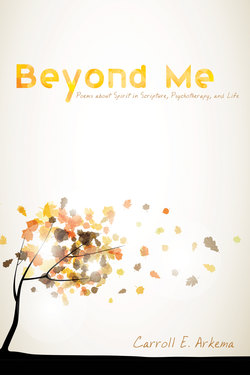Читать книгу Beyond Me - Carroll E. Arkema - Страница 5
Foreword
ОглавлениеIt was during my tenure as Editor-in-Chief of the Journal of Religion and Health [JORH] that I first became acquainted with Carroll Arkema. As I recall, Carroll wrote me a note telling me that he had recently begun to write poetry as a way of pursuing his own self-healing and as a way of reflecting upon the mystery of human existence. He wondered if the Journal would be interested in receiving his first completed poem as a submission for potential publication. Interestingly, I had just redesigned the format of the JORH. In addition to its predominant focus on the scientific, research-driven, investigation of the positive roles religion and spirituality might play in the enhancement of physical, psychological and spiritual health, I was including a segment in each issue devoted to what I identified as “The Heart Has Its Reasons: The Personal Search for Meaning in Story, Poetry, Prayer and the Arts.” I knew this was a bit risky since the Journal was not known as a literary or memoir oriented journal. In truth, I was silently calling upon the Divine Spirit to send some copy to support this new Thursday’s Child segment of the JORH.
So when I received Carroll’s note, I was touched by his own risk-taking. It takes a bit of courage to bring one’s poetry to the attention of potential critics, especially as a new poet. In this regard, Carroll’s first poem, “Panic,” seems well named! However, when I encouraged him to submit his poem for consideration for publication, I soon discovered that we at the Journal were not disappointed and his poem was published in the June 2010 edition. When I informed him of our decision to publish his poem, I encouraged him to continue to write poetry and to continue to submit his poetry to the Journal.
The book you have before you, reader, is a vivid example of what a little editorial encouragement can lead to! The poems it contains reveal a compelling story of Carroll’s individual journey from a childhood deeply shaped by the exigencies of life on a family farm in Iowa to his becoming a caring and effective psychoanalyst/pastoral psychotherapist in the urban fields of New Jersey and New York City. This, Carroll’s first volume of poetry, then, is a profoundly personal narrative of the journey of a human soul toward greater theonomous unity with its own depth. It speaks of a soul wounded, yet deeply nurtured by the archetypal world mediated by the biblical tradition and the way that tradition was lived in the kinship community of rural Iowa and beyond. These poems of personal journey are unflinchingly honest and courageous expressions of what I have come to call the “Poetry of Vulnerability.” One can learn much about becoming more fully human by reading them.
Yet, the poems in this volume are also subtle interpretations of biblical stories (as well as one on Faulkner’s The Sound and the Fury) that seek to express the heart attuned to the larger mystery of good and evil, life and death, toward which these stories point. Here, I believe, Carroll has taken his greatest risk as a poet. In the Post-Shoah, Post Modern world of our time, the poetry of vulnerability resonates in the face of our experience of individual and collective trauma. Such poetry often reflects the loss of the sense of the plausibility of religious and moral foundations that sustain us. It is in this context that Carroll’s courageous expression of his own vulnerability may speak to us of our own.
It may be more difficult for some readers, however, to find the same resonance in Carroll’s fascinating poetic renderings of the biblical stories themselves. Here Carroll, in contrast to the nihilism of our age, demonstrates a theological confidence that the master narrative of creation and redemption given in the mythos of biblical narrative can still speak to us today in our profound profanity, godlessness and disillusioned secularity. As Carroll sees them, the biblical stories address the human struggle to become, to individuate, to achieve wholeness and a sense of gratitude and relatedness. Thus they speak to us in our brokenness, fear, envy, rage, and terrible suffering; hence, their power and relevance to mediate meaning and healing to our troubled hearts and souls. My fantasy is that Carroll may find himself engaged in much dialogue with his readers over such questions. I surely hope so. In the meantime, we are in his debt for taking the risks that he has in bringing this volume of poems to us as deep expressions of a compassionate heart fully alive in the breath and creative spirit of the Divine. May they be widely read and discussed.
Donald R. Ferrell, PhD
Jungian Psychoanalyst
Editor-in-Chief Emeritus
The Journal of Religion and Health
